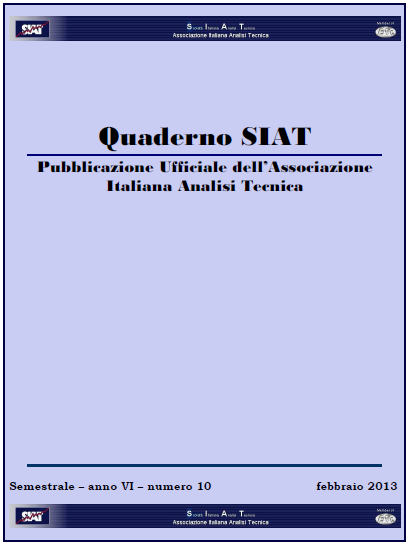Why traditional use of Fibonacci retraces will not make you successful?
Here is the reason. Read this article carefully…
I never considered the use of the Fibonacci numbers in my trading…
Until I have discovered that some of the Fibonacci numbers – a very small set – can be used to model the participation of powerful classes of algorithms that are very active and widespread in modern markets.
In today’s markets human participation and volume generated in exchanges is only a portion of that generated by algorithms which, in some cases, exceeds 80% of the total.
If that is the cases then (and it can be proven), why traditional uses of Fibonacci traces found in literature are still regularly proposed by trading experts ?
Are implications of the use of traditional Fibonacci fully understood?
I do not think so. Let me explain why.
First of all we should ask why the majority of the Fibonacci levels are not significant when modeling institutions’ algorithms, probably the strongest power in the markets, backed by billions of dollars?
Secondly, how are the Fibonacci numbers derived?
If Fibonacci numbers are a wonder of nature – i.e. we find them into manifestations of nature, like the DNA helix or a strong hurricane structure – in a recent research paper published for IFTA/SIAT, I have shown how some of the numbers like 38.2%, or 23.6% are engineered in a way that not necessarily reflects manifestations in nature.
So, from a practical point of view, we may well be dealing with pure human inventions rather than levels that explain or help trading the markets. Levels that are “grounded” into real market behavior, as I like to note.
Thirdly, why Fibonacci number are considered useful in trading?
The simple argument – according to traditional literature – is that trading any market is comprised by free willed individuals. Fibonacci places “natural limits” to how excited or depressed a free-willed mechanism will expand or retract into. Therefore, you can look for a Fibonacci ratio to catch the expansion of price or the retraces of a move.
Unfortunately, when it comes to practical trading, Fibonacci has to be paired with other trading techniques. Some writers like to make a parallel with the 3 best-non-kept secret to investing in real estate: Location, Location, Location.
In fact the trading equivalent, they say is, is Confirmation, Confirmation, and Confirmation.
I would rather say it is Psychology, Psychology, and Psychology.
Which brings to the fourth point: why confirmation? And what are the consequences?
Confirmation is needed because Fibonacci levels alone are not enough.
We do not know where price will stop, i.e. at what level. Moreover, typically price will overshoot or undershoot a level in a totally unpredictable way that confuses traders.
For this reason, the most immediate fix has been to consider other supporting techniques, e.g. price patterns or indicators, so that a trader would get involved at a Fibonacci level, only when the confirmation techniques all agree.
If this concept makes sense from a conceptual point of view, it does not mean is the way to go to be successful in the markets.
And, in fact, it is sufficient to look at the statistics for a confirmation. Again and again we observe that over 90% of traders still lose consistently in the markets.
If use of Fibonacci – in the way it is proposed by the traditional literature – was any better, the number of successful traders would be much higher. Don’t you think?
So what is the problem with confirmation?
In my research I have identified two major issues:
- Use of confirmation is complex for new and experienced traders
- Some uses of confirmation are flawed both from a conceptual and practical view point
Let’s start from the first issue.
The majority of people, including experts, think that you can add several techniques and use their reciprocal confirmation for practical trading.
Nothing more removed from reality and practice.
These people seem to forget that trading is a numbers game.
When you use different techniques for confirmation you have also to mind the main problem: reconciling the signals of each and every one of these techniques.
Traders who use several confirmation techniques never seem to mind the probability of each and every ‘combination’ that these techniques can present themselves in a particular situation.
Plus the indications from these techniques have to be reconciled with price itself.
Therefore, initially traders get excited by the idea of confirmation, but then they start realizing that, indeed, their trading becomes even more difficult.
The reason is that traders do not have the knowledge and the skills to reconcile all the possible configurations of the indicators, plus they do not know how to reconcile indicators that offer opposite readings.
Moreover, the majority of traders, including experienced traders, do not use a probability, reliability, expectancy and frequency of opportunity in their trading.
So, confirmation is only useful if you employ a very limited number of indicators and, even in that case, it is still complex and tends to shift trading into discretionary approaches, a sure recipe for disaster and lack of success for starting and experienced traders alike.
The second issue mentioned above (e.g. flawed use of confirmation) is related to the way the techniques are used in confirmation.
In my recent research paper I have documented some issues like the ‘inversion of semantics’ in using retraces and the practice of using the clustering or confluence.
Confluence is when multiple Fibonacci levels are identified in the same area from different Fibonacci traces. The areas where levels fall close to one another identify ‘clusters’ deemed to be stronger support or resistance areas.
The reasoning behind confluence areas is that of confirmation. However, how can single, unreliable Fibonacci levels come all together to identify something that is more reliable?
It would be like thinking that a bunch of inexperienced and unreliable players could come together to form a great basketball team that wins the season.
How probable is that? Could that ever happen? I do not think so.
Still you find a lot of traders who speak with confidence about confluence and clustering like it was an effective technique. It is not, and you do not have to fall into the trap.
Yet Fibonacci numbers can be employed in a very effective way when used in what would generally be considered a totally unconventional approach (and here lies your edge), to explain price structure in modern markets.
Some of the Fibonacci numbers can be used to model the presence of algorithmic trading on all timeframe in high volume markets, which includes equity indexes, large stocks, major forex pairs, commodities and other highly participated asset classes.
The fact that I found fascinating is that this way of looking at the market enables techniques unheard of before, like procedural tests of areas of support and resistance (a technique I called FibStalking timing) and price discovery.
Particularly, price discovery – a technique to extract information on what price can do next – is enabled by the same levels used for the stop losses.
Moreover price discovery is often obtained without risking any money in areas where timing is performed through the FibStalking technique.
To learn more about the FibStalker methods that can enable you to trade and explain price and get involved in the same price areas where algorithms do, as well as, use a method that incorporates the psychology of the markets, check out the information in www.fibstalker.com
The simplicity of the methods and reliance only on price information, is what a lot of students and followers like and appreciate about my work.
If you like this article and it makes sense to you please share your own stories and thoughts about using Fibonacci… leave a comment on the blog or drop me an email to: fibstalker@gmail.com.
In my research and practical trading I study the effects on price of classes of algorithms in high volume markets. If you are interested in a new and effective trading edge, check my work at www.fibstalker.com.
Happy Trading
~FibStalker
WHO IS GIUSEPPE BASILE?

Giuseppe is a Certified Market Technician and swing trader, IFTA and SIAT associate. Holds a B.Sc. in Computer Engineering and a MA in Finance. In the markets since 2001, became trader and mentor in 2007. Studied with several traders in UK, Europe and US, adding over 7,000 hours of screen time between 2009 and 2013 alone. In 2012 launched FibStalker, a blog specializing in forex, futures and stocks trading, where he also runs a free newsletter and publishes daily videos with actual setups and complete trading plans.
Giuseppe’s unique method attempts to spotting footprints of Program Trading, a powerful class of algos that governs the markets. Giuseppe is a rigorous researcher with several published papers about money management, automated trading, HFT and innovative timing and trading methods.

















